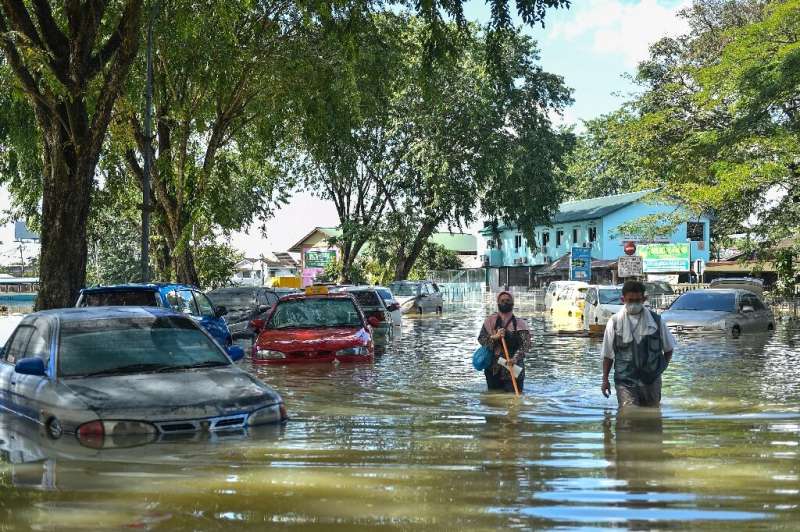Malaysia's worst floods in years have caused widespread damage, including the densely populated Selangor state.
The death toll from Malaysia's worst floods in years rose to 27 on Wednesday, as a clean-up operation gathered pace and residents assessed the damage unleashed by the disaster.
Days of torrential rain caused rivers to overflow at the weekend, swamping cities, cutting off major roads, and forcing tens of thousands of people to flee their homes.
Selangor—Malaysia's most densely populated and wealthiest state, encircling the capital Kuala Lumpur—has been one of the worst-hit areas.
Many in its flood-hit state capital Shah Alam were left stranded in their homes with barely any food for days, before being evacuated on boats in a chaotic rescue operation.
"We actually lost everything—our cars, our house. Everything gone," said Chan Yung, who had been evacuated in Shah Alam.
"We hope the government will give us some support."
Floodwaters have been slowly receding, and authorities said the process would speed up after a broken sluice gate—which controls the flow of water into a nearby river—was repaired.
The death toll rose to 27—20 in Selangor and seven in the eastern state of Pahang, according to state news agency Bernama.
With reports of people still missing, it is expected to climb.
Opposition leader Anwar Ibrahim urged the government to hold a public inquiry following the widely criticised flood response.
Poor coordination between government agencies and the delayed deployment of the military "turned the response to the natural disaster into a human, governance disaster", he said.
Prime Minister Ismail Sabri Yaakob has admitted there were "weaknesses" but pledged improvements in future.
Around 65,000 people have been evacuated, most of them in Selangor and Pahang, according to official data, which revised down by several thousand a figure released Tuesday.
The Southeast Asian nation is hit by floods annually during the monsoon season, from November to February, but those at the weekend were the worst since 2014.
Global warming has been linked to worsening floods.
Because a warmer atmosphere holds more water, climate change increases the risk and intensity of flooding from extreme rainfall.
© 2021 AFP
























